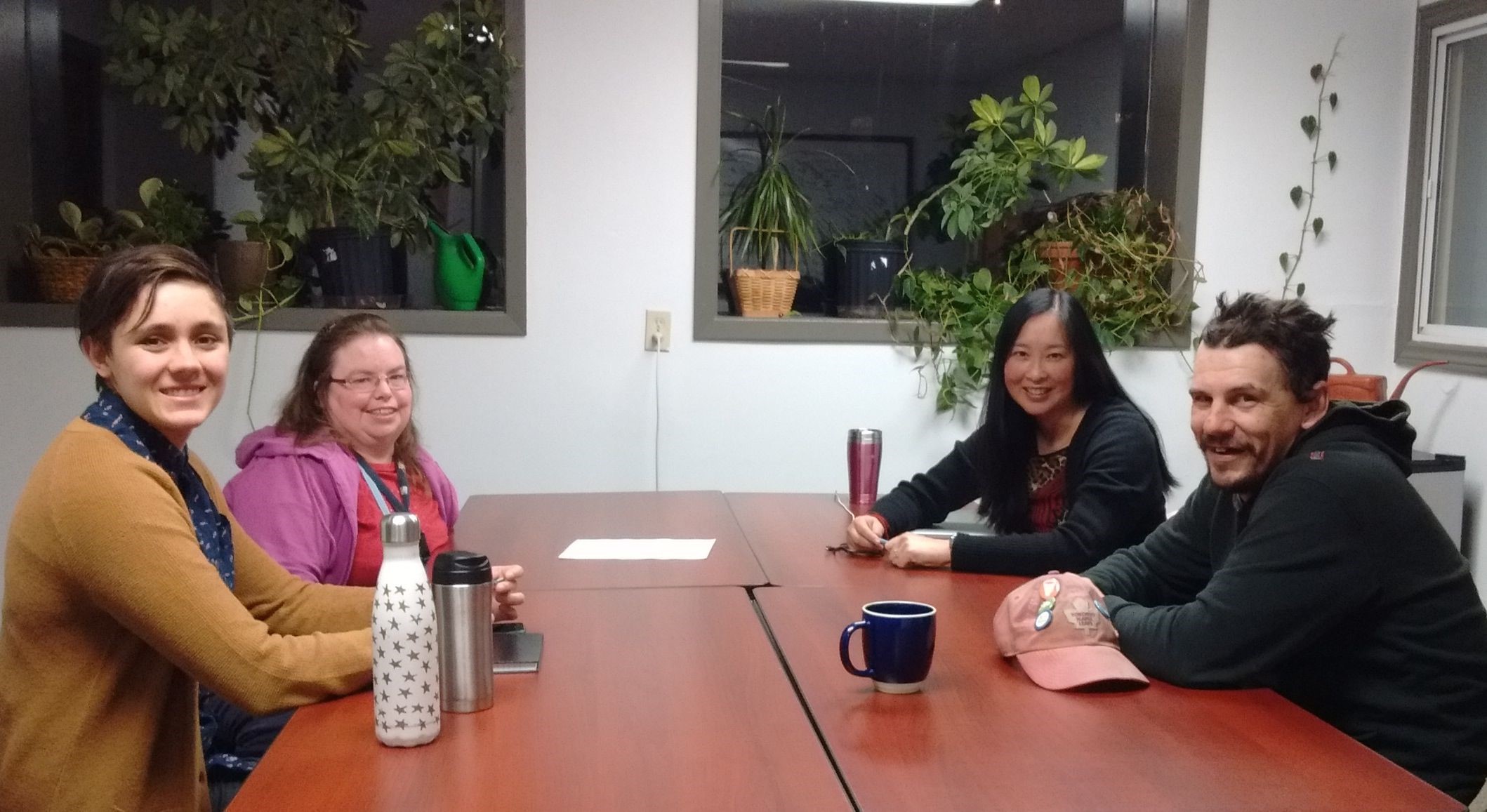by Mystaya Touw, Graduate Research Assistant, Student Pathways Working Group
 The CFICE Student Pathways Working Group is mapping and reviewing the curricular pathways for students. Why? Because findings in Phase I of CFICE suggested that, while senior undergraduates at Trent University are offered the opportunity to pursue community-based research (CBR), they often lack experience, skills and necessary competencies to effectively work with community groups.
The CFICE Student Pathways Working Group is mapping and reviewing the curricular pathways for students. Why? Because findings in Phase I of CFICE suggested that, while senior undergraduates at Trent University are offered the opportunity to pursue community-based research (CBR), they often lack experience, skills and necessary competencies to effectively work with community groups.
Community-based learning can be very different from the traditional academic research with which students are familiar. Conventional prerequisites such as having completed a certain number of courses or surpassing an academic average threshold are not always good predictors of a student’s ability to do a quality community-based research project. This has, at times, resulted in research that was not useful to community partners or, in some cases, compromised the relationship between the campus and community partner.
Existing courses and co-curricular experiences are available to improve skills in community-based research, yet there is little guidance for students to follow a scaffolded pathway of learning. This led our working group to consider the ways that universities can better prepare students so that they can be successful community-based researchers. This includes everyone from incoming high school students, through undergraduates, up to graduate students.
How is it being developed?
The research team includes Mystaya Touw, Stephen Hill, Jim Blake, and Taylor Mackey. We’ve reviewed the literature on curriculum mapping, along with literature on curriculum specific to community-based research, service learning, and civic education. We then identified a list of core competencies for CBR through one-on-one interviews with staff, faculty, students, and community members. This list was continually revised based on new research or feedback, including comments from CFICE meetings.
We next looked for examples of comprehensive community-based research programs at other institutions, including some high school opportunities, scholarship programs, and Canadian post-secondary examples. Then, we compiled our existing Trent University curricular and extra-curricular opportunities relating to community engagement and research. Using all of this information, we are attempting to create a plan for a community-based research curriculum pathway for students to follow at Trent University by looking for gaps, and ideas to help fill these. We have outlined a set of course work and experiences that help students become effective community-based researchers.
What will be the end result?
The result of our work will be a report reviewing the literature on curriculum mapping and community-based research, examples of other programs, as well as exploring the skills and competencies required for CBR and strategies for assessing these. We also compiled a list of curricular and extra-curricular opportunities for students at Trent that relate to or support CBR. Finally, we will make recommendations about how to improve and expand on existing opportunities to further develop the undergraduate curriculum and student experience in CBR at Trent, and other institutions.
How will this work help students, professors, and community organizations at Trent?
There is a renewed commitment to community-based research that is driven both internally and externally. Ontario universities, for example, are being encouraged and incented by the province to incorporate more experiential learning opportunities, including community-based research, into their degree programs. Trent has stated in their Strategic Mandate Agreement with the province that graduating students will leave having at least one meaningful experiential learning opportunity. This creates pressure on the U-Links Centre for Community-Based Research in Haliburton, and the Trent Community Research Centre in Peterborough to expand the number of students working with community partners.
The increasing number of students involved in community-based research, combined with the identified need to improve students’ preparation, creates challenges. By surveying the literature and landscape, looking to identify best practices and learning outcomes for community-based research, our work provides faculty and instructional designers with a starting point for curriculum mapping, course development and redesign. Ultimately, by successfully supporting and developing students community-based research skills, we are also supporting communities.

Students Tessa Nasca and Katie Caddigan, Professor Nadine Changfoot, and community member Jason Hartwick discuss a community-campus project in Peteroborough.
How will this work help campus-community engagement practitioners at other universities?
We hope our report helps to prepare and engage students in community-based research, particularly at the undergraduate level. There is not a robust literature surrounding undergraduate curriculum for community-based research, so we also hope to publish some of this in the academic literature.
Hopefully, this report will be a useful tool for other institutions to examine their curricular and extra-curricular community engagement opportunities. The goal is to improve institutions’ service to students by better providing them with tools and opportunities. This in turn helps communities by creating knowledgeable, engaged students who are prepared and excited to work with their communities.
When will the curriculum mapping report be ready?
Our draft report is just about ready for review by colleagues and others at Trent and the CFICE network. The goal is for a final version to be complete this fall and shared through the CFICE website. We’re also presenting our work at the Council of Ontario Universities 2018 Learning Outcomes & Experiential Learning Symposium in October.